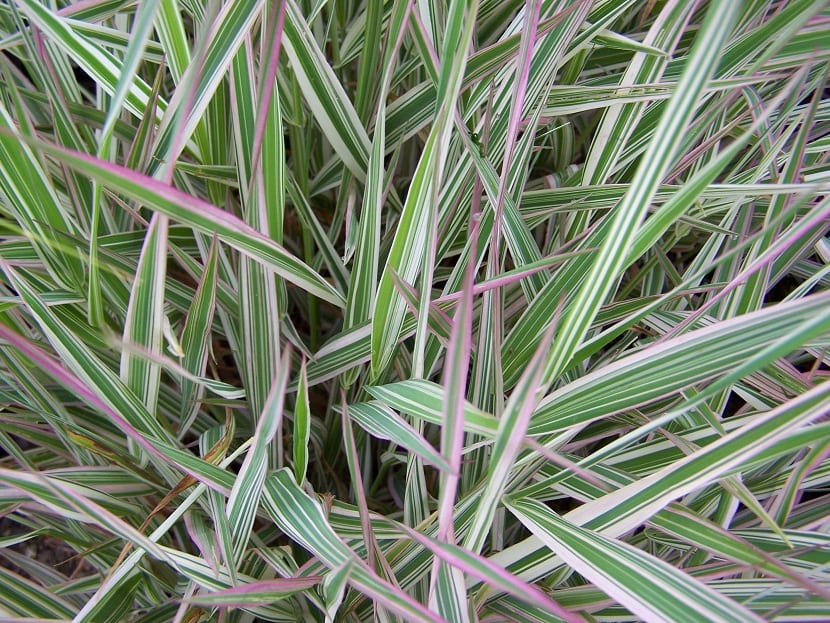
The common name by which it is known is ribbon grass and it belongs to the genus of high-growth grasses where its characteristics make it very similar to sugarcane.
The Phalaris arundinacea can reach up to 1,5 meters in height, but it will depend on the depth that its underground stems reach, which and the more they penetrate the banks and currents of the streams, make it more compact and less high.
Features

Its morphology depends on the characteristics of the habitat where the plant is located, but in general, the grass is thick, the stem is erect, it is devoid of hair and it has leaves that are affiliated little by little; the blades have a rough texture on both sides and are flat.
The compact panicles are usually erect or in some cases a little extended, the sizes vary between 7 and 40 cm. long, while the lead ligule has a membranous and elongated consistency.
Flowering takes place between May and mid-June. Its flowers are green and purple that over time turn beige; they are among the first to sprout in spring forming a thick rhizome on the soil surface that dominates much of the space.
It is a perennial plant that is native to Europe, North America, and North and East Asia.
It has been widely introduced in the colder regions belonging to the northern hemisphere and has therefore been adapted to a large part of the northern United States and southern Canada, specifically Oregon, Washington, northern California, Michigan, and Iowa.
To develop and grow in excellent conditions the plant needs:
- Soils whose PH is neutral or slightly acidic.
- It prefers flooded areas, puddles and rivulets.
- So that the underground stem grows strong, the soil must be clayey or sandy and they should generally be kept dry, humid or soaked depending on the rest of the conditions such as: sun exposure, soil texture, season of the year or temperature, among others
- A balance of moisture must be maintained in the soil.
- It grows well in semi-shade or in direct sunlight.
- It resists frost quite well.
- It develops very quickly in optimal conditions.
Farming

This grass grows very fast and easily as soon as it gets a moist soil. To make the seeds germinate, sow them in a layer that does not exceed 10 cm and separating them from each other with a distance of between 5 and 10 millimeters.
It is important that they are well sunk into the substrate so that in a few days you will see the shoots and in a few months it is already possible to harvest it. The expansion of the tape grass has its explanation in human activity, since it has been cultivated with the purpose of using it as hay and fodder for livestock, especially in North America.
The plant is propagated both by seeds and by creeping rootstocks. To do it you must prepare a seedbed that is very clean, or you can use the ashes from burning plants or bushes. If you sow during the spring, you will see how the seeds will germinate easily, however it is important that the seedlings are already well established before frost or flood occurs, since in fact in some parts of Europe they plant in areas that are prone to the latter.
In areas where winters are mild or on burned land with poor drainage, sowings in the fall season can be successful as long as the seeds do not germinate until spring. The Phalaris arundinacea is a fairly resistant plant because is able to tolerate an annual rainfall of 3 to 26 dm, an annual temperature of 5 to 23 degrees Celsius, and a pH of 4,5 to 8,2.
Although it is a cool season herb that is easily found in low-lying meadows and pastures or in flood-prone areas, are moderately resistant to drought, and they also do very well on fertile upland soils in humid areas.